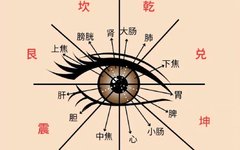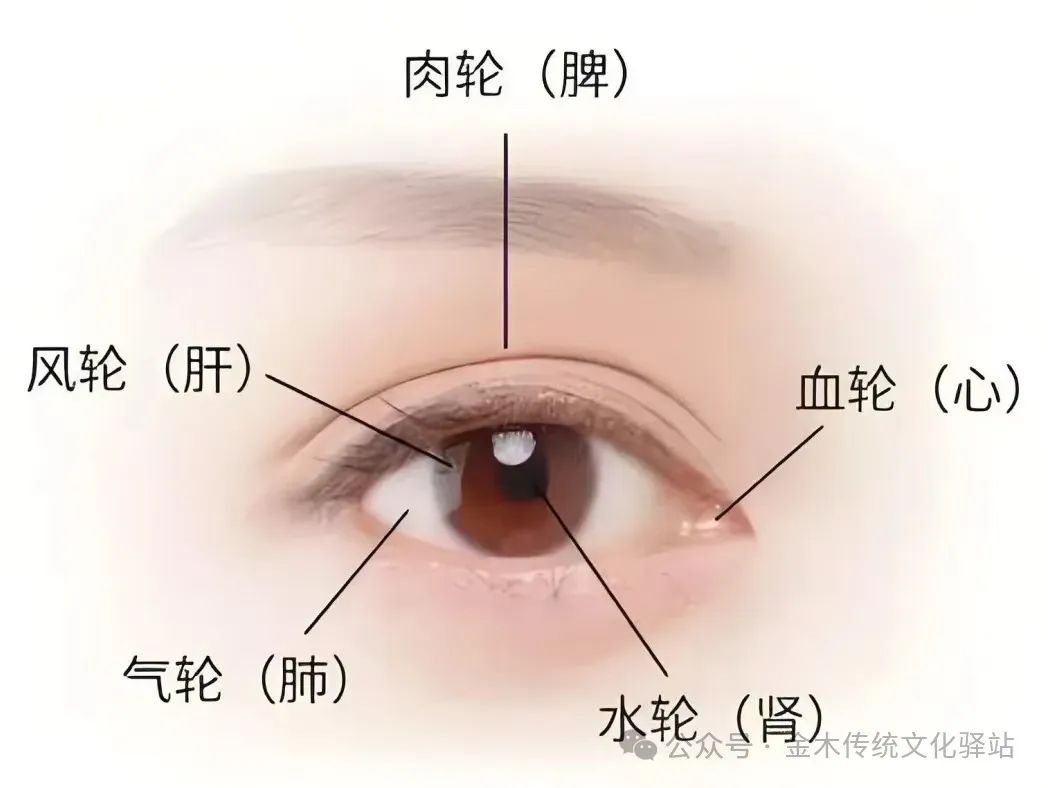
1. Observation of the Eyes in Diagnosis: The essence and energy of the five zang organs and six fu organs are reflected in the eyes. If the spleen qi is deficient, yang will decline, failing to contain yin, causing the spirit light to scatter outward, leading to a wide appearance of the spirit water, making objects appear doubled. The nourishment is in the liver, the master is in the kidney, and the harmony is in the spleen, which can combine the yin of the kidney and spleen, allowing the liver to reach it, thus returning the essence to the eyes.
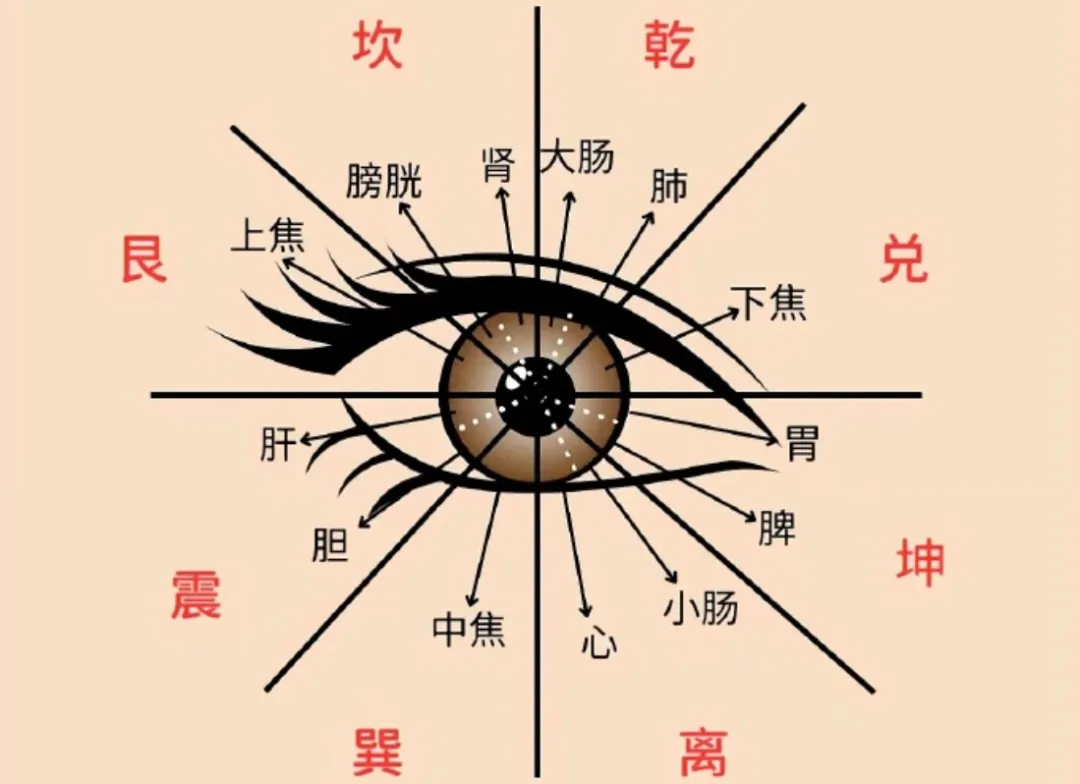
Clear eyes indicate cold;Dark and turbid eyes indicate heat;Cloudy eyes indicate dampness;Dry eyes indicate dryness;Dry and rough eyes indicate insufficient liver yin;Red and swollen eyes indicate wind-heat in the liver channel;Swollen eyeballs indicate liver fire and external wind-heat;Constricted pupils often indicate blazing liver and gallbladder fire;Darkened eyelids indicate kidney qi deficiency;Dark eyelids often indicate kidney deficiency;Red and moist eyelid margins indicate damp-heat in the spleen;Eyes open during sleep indicate spleen qi and blood deficiency;Eyes that do not close during sleep indicate weak spleen qi;Eyes that cannot close when awake indicate kidney deficiency;Distinct eyelids indicate phlegm-damp disease;Weak eyelid opening indicates deficiency of original qi;Sunken eyelids with no tears when crying indicate severe injury to yin fluids;Swollen eyelids like a sleeping worm with yellow urine indicate jaundice;Swollen eyelids indicate signs of edema;Eye corners with spots indicate liver fire rising;Red and painful eye corners indicate heart fire;Pale white eye corners indicate blood deficiency;Red sclera indicates lung fire;Red sclera with redness indicates external wind-heat;Red sclera with red veins often indicates yin deficiency with excess fire;Eyes that are slightly fixed indicate internal phlegm-heat obstruction;Eyes that are cross-eyed indicate internal liver wind movement;Eyes that stare without life indicate internal liver wind movement;Eyes that are dull and slow to move indicate kidney essence deficiency;Dull and slow-moving eyes indicate a precursor to wind stroke.Eyes without brilliance and unresponsive indicate deficiency of the essence and qi of the organs.Children sleeping with open eyes often indicate spleen qi and blood deficiency.
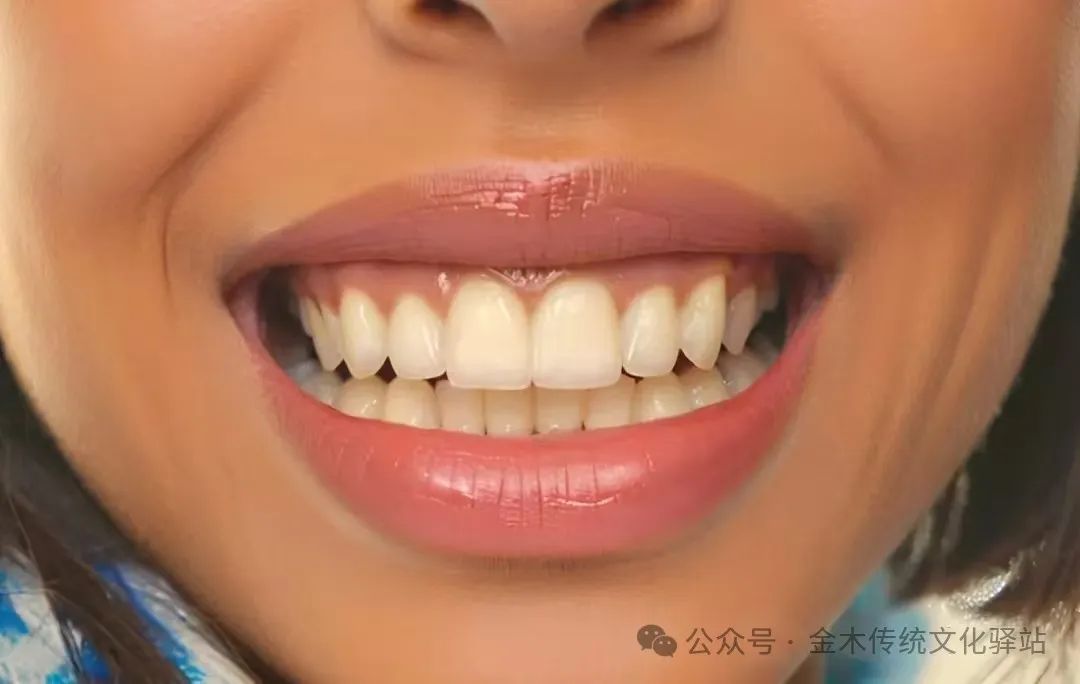
2. Observation of the Throat and Teeth in Diagnosis: Deep red and swollen throat indicates excess heat syndrome;Soft red throat with swelling and pain indicates yin deficiency with excess fire;Soft red throat with swelling and pain indicates heat evil phlegm obstructing the lungs;Red and swollen throat with pain indicates excess heat and toxins in the lungs and stomach;Pus and ulceration in the throat with yellow-white necrotic spots indicate severe heat toxin in the lungs and stomach;Gray-white necrotic spots in the throat indicate diphtheria, with heat injuring the lungs and kidneys.Dry teeth indicate injury to yin fluids;Teeth that are dry and smooth like stone indicate extreme stomach heat;Teeth that are the color of withered bones indicate kidney yin deficiency.Teeth tightly closed or with sounds between teeth indicate phlegm obstructing the channels;Teeth tightly closed or with sounds between teeth indicate extreme heat causing spasms.

3. Observation of the Face in Diagnosis: White complexion indicates cold syndrome, which may be due to yang deficiency or the initial stage of an external pathogen;White complexion indicates yang deficiency, qi deficiency, and blood deficiency;White complexion with cold and blood stasis indicates constricted meridians;Pale complexion indicates lung disease;White and swollen complexion indicates qi deficiency;White and thin complexion indicates blood depletion;White complexion like withered bones indicates severe lung disease;White complexion with emaciation, red cheeks, and red lips indicates excess fire due to yin deficiency;White complexion with slight redness and luster indicates sufficient qi and blood.Yellow and red complexion indicates heat;Yellow complexion indicates dampness;Pale yellow complexion indicates cold dampness;Yellow complexion with a floating sheen indicates wind-damp;Yellow and red complexion indicates wind-related conditions;Pale yellow complexion without luster indicates spleen deficiency;Yellow complexion like orange indicates damp-heat;Yellow complexion like bitter orange indicates extreme spleen qi deficiency;Yellow complexion with dark blue indicates blood stasis with damp-heat;Yellow complexion with a reddish hue indicates wind, indicating wind-heat disease;Yellow complexion with luster indicates recovery from illness;Yellow complexion with a greasy sheen indicates swelling and pus conditions;Yellow complexion with a slight yellow hue indicates presence of stomach qi;Red complexion with fever and delirium indicates excess heat within;Bright red complexion indicates a critical condition of the heart;Very red complexion indicates blood conditions, such as blood loss or local congestion;Normal red complexion indicates yang qi stagnation on the surface, causing sweating that does not fully resolve.Blue complexion indicates cold stagnation, qi stagnation, and blood stasis;Blue complexion indicates qi and blood stagnation, indicating cold and pain;Blue complexion like grass indicates severe lung disease;Black complexion indicates pain-related diseases;Black complexion indicates severe cold and extreme pain;Black complexion indicates kidney yang deficiency, with internal cold and qi and blood stagnation;Black complexion with dry and rough skin often indicates kidney yin deficiency;Black complexion like stove soot indicates kidney qi deficiency;Dark and dull complexion indicates chronic illness and deficiency conditions;Bright and clear complexion indicates superficial illness;Dull and murky complexion indicates deep-seated illness;Red cheeks indicate internal heat;Bright red cheeks in the afternoon indicate water deficiency with excess fire, indicating a fire-type lung condition.

4. Discussion on Limb Symptoms in TCM: The limbs include the upper limbs (shoulders, elbows, arms, wrists, palms, fingers) and lower limbs (thighs, hips, shins, ankles, feet, toes). The heart governs the blood vessels of the limbs, the lungs govern the skin and hair of the limbs, the spleen governs the muscles of the limbs, the liver governs the tendons of the limbs, and the kidneys govern the bones of the limbs. The spleen has the closest relationship with the limbs. The upper limbs are where the three yin and three yang meridians of the hands circulate, while the lower limbs are where the three yin and three yang meridians of the feet circulate.(1) Observing the limbs can diagnose changes in the five zang organs and the meridians circulating in the limbs:1. Atrophy of the limbs or one limb being thin and atrophied often indicates qi and blood deficiency or obstruction of the meridians.2. Swelling of the limbs or one limb swelling, if red and painful, often indicates blood stasis or heat obstructing the meridians.3. If the feet are swollen, or if the whole body is swollen, it often indicates edema. If the lower limbs are swollen with skin like an elephant’s skin, it is often seen in blood vessel diseases.“The limbs are the foundation of all yang” diagnosing the cold and warmth of the limbs can provide insight into the rise and fall of “yang qi,” which is also significant for prognosis.4. If the limbs indicate an external pathogen or internal injury. For example, heat in the back of the hand indicates an external pathogen, while heat in the palm and lower abdomen indicates internal injury.5. Heat in the palm can be correlated with heat in the forehead for mutual examination. If the heat in the palm is greater than that in the forehead, it indicates deficiency heat. Conversely, if the forehead heat is greater than that in the palm, it indicates exterior heat.6. If a child has a high fever with cold fingertips, it is necessary to prevent convulsions. If there is fever, runny nose, red eyes, and cold fingertips, it indicates the onset of measles.7. If the hands and feet are twitching, it often indicates spleen and stomach qi deficiency, leading to insufficient nourishment of the tendons. If the feet cannot walk, are weak and painless, it indicates atrophy syndrome.8. Trembling of the hands and feet often indicates blood deficiency, insufficient nourishment of the tendons, or excessive drinking, indicating a precursor to stroke. Pain in the whole body or localized pain indicates bi syndrome.9. Numbness in the hands and feet, or numbness in one part of the body often indicates qi deficiency. Numbness in the hands and feet extending to the elbows often indicates a precursor to stroke.10. Pain in the muscles, tendons, and joints of the limbs often indicates invasion by wind, cold, and dampness. Alternatively, it may indicate wind-dampness transforming into fire or phlegm-stasis, causing heat-stasis obstructing the circulation of qi and blood. For upper limb pain, add Chuanxiong (Ligusticum chuanxiong), for lower limb pain, use Niu Xi (Achyranthes bidentata) and Mu Xiang (Saussurea costus) with additional Frankincense and Myrrh for severe pain.11. Fixed pain in the limbs indicates retention of cold and dampness, obstructing qi and blood. Pain that moves around often indicates wind evil, or may be accompanied by wind evil. Coldness in the limbs indicates spleen yang deficiency.12. Treatment for limb swelling and pain: (Luo Tianyi) Da Qianghuo Decoction: Qianghuo (Notopterygium incisum), Shengma (Cimicifuga foetida) each 3g, Duhuo (Angelica duhuo) 2.1g, Cangzhu (Atractylodes lancea), Fangfeng (Saposhnikovia divaricata), Weilingxian (Cynanchum wilfordii), Licorice, Angelica, Poria, and Ze Xie (Alisma orientale) each 1.5g. Function: dispel wind, eliminate dampness, raise yang qi, and tonify spleen earth, allowing damp evil to depart.Physician Li Zhongzi believes: “San Cai Decoction nourishes the yin of the lungs and stomach, allowing lung qi to descend, and the essence of food and fluids to be distributed to the extremities, thus allowing atrophy to recover.” Atrophy syndrome (wei zheng) is due to internal heat steaming, with heart yang excessively rising, and is treated with Chengqi Decoction followed by Ren Shen Decoction, sending down bitter cold descending medicines. This is the unique meaning of treating atrophy in the Inner Canon, taking from the yangming. When the internal heat is removed, continue with San Cai Decoction.Note:San Cai Decoction consists of Ren Shen (Ginseng), Tian Dong (Asparagus cochinchinensis), and Gan Di Huang (Rehmannia glutinosa). Its function is to tonify qi and nourish yin, used for qi and yin deficiency, fatigue, shortness of breath, and poor appetite, with a red tongue and dry mouth. Da Chengqi Decoction: harshly purges heat accumulation, drains fire, and detoxifies. Xiao Chengqi Decoction: lightly purges heat accumulation, eliminates fullness.(2) Observation of Nails in Diagnosis: White nails indicate both qi and blood deficiency;Pale white nails indicate blood deficiency;Pale nails indicate lung and stomach cold deficiency;Pale nails indicate yang deficiency with cold, and both qi and blood deficiency;Yellow nails often indicate jaundice;Bright red nails with emaciation indicate excess fire due to yin deficiency;Deep red nails often indicate internal heat;Blue-purple nails often indicate blood stasis;Black nails often indicate a terminal condition;Pressing on the nails turns them white, and they return to red upon release, indicating a treatable condition; if they remain white, the condition is difficult to treat.Yellow-black ears indicate kidney deficiency.Nostrils flaring often indicate lung heat or asthma. Rapid breathing with significant chest movement often indicates excess heat syndrome.
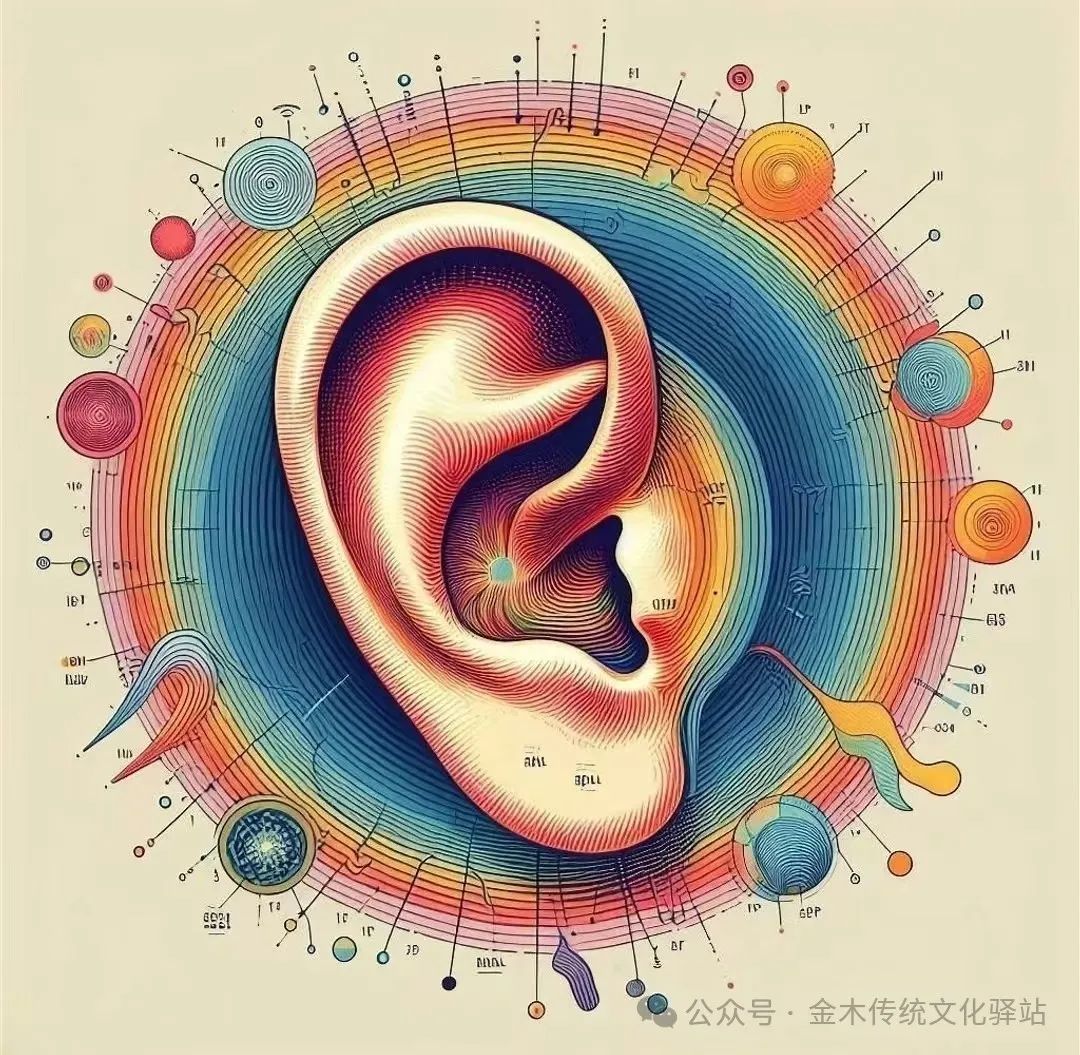
5. Observation of Voice in Diagnosis: Low voice often indicates internal injury and deficiency syndrome.Loud voice often indicates external pathogen and excess syndrome.Raving and delirium often indicate heat syndrome and excess.Low voice with few words often indicates deficiency syndrome and cold syndrome.Sudden hoarseness often indicates wind-phlegm obstructing fire.Rough breathing often indicates external heat excess. The disease often involves the lungs and stomach.Weak and shallow breathing often indicates internal injury and chronic illness.Excessive wheezing with lung distension and rough breathing often indicates excess heat in the lungs and stomach.Weak wheezing with low voice and short breaths often indicates kidney deficiency.Dry cough without phlegm, with cough being the main symptom, indicates treatment in the lungs.Coughing with phlegm, with phlegm being the main symptom, indicates treatment in the spleen.Sudden cough with hoarseness often indicates excess metal not resonating. Often indicates fire evil.Chronic cough with hoarseness often indicates metal breaking and not resonating. Often indicates qi deficiency and essence injury.Coughing with much mucus, nasal congestion, often indicates a cold. This condition is easy to recover from.Sudden onset of cough with continuous sounds often indicates a sudden cough. This condition is more difficult to recover from.
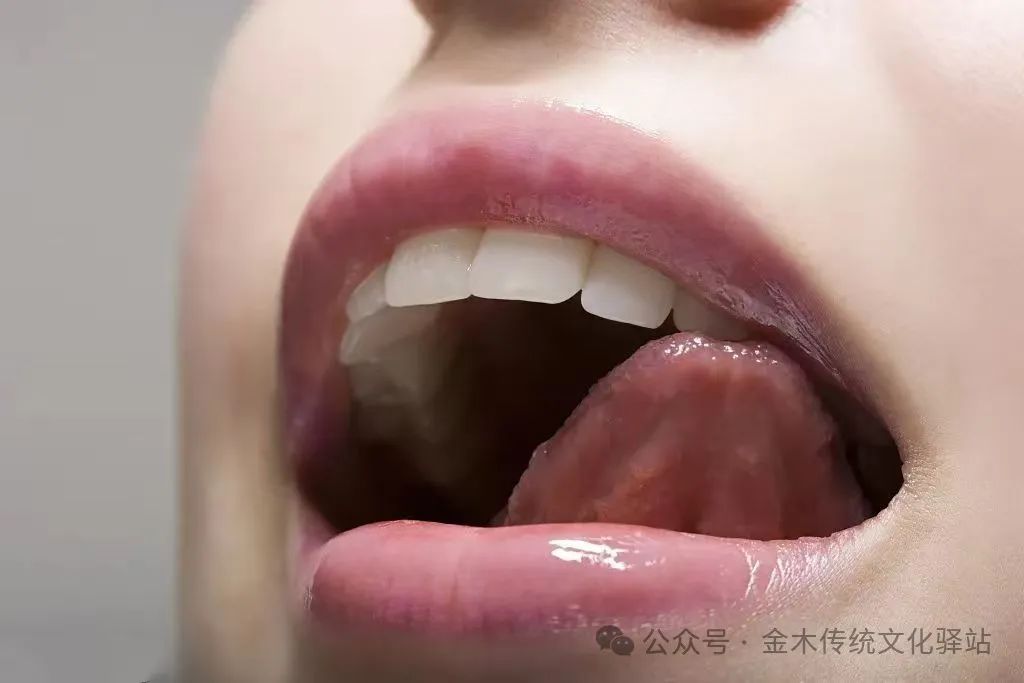
6. Observation of the Mouth in Diagnosis: Facial asymmetry indicates wind-phlegm obstructing the head and face meridians, with yangming storing phlegm and turbid, and taiyang being externally affected by wind. Wind-phlegm obstructing the head and face meridians leads to obstruction of the channels, causing muscle and tissue to lose nourishment, hence the asymmetry. If there is no external evil, qi and blood can still circulate, and the relative urgency indicates that the urgent side is being pulled, hence the asymmetry.Sweet and greasy taste in the mouth indicates damp-heat in the spleen;Salty taste in the mouth indicates kidney deficiency;Bland taste in the mouth indicates damp turbidity in the stomach, often indicating spleen and stomach deficiency;Sour taste in the mouth indicates poor digestion and gastrointestinal stagnation;Bitter taste in the mouth indicates liver and gallbladder fire, with gallbladder fire rising;Smelly taste in the mouth indicates heat in the stomach, poor digestion;Ulceration in the mouth indicates heat accumulation in the heart and spleen, severe cases lead to mouth sores;Dry mouth and throat indicate excess fire due to yin deficiency, with true yin being internally deficient;White patches in the mouth indicate oral sores;Chapped lips often indicate food accumulation;Dry and chapped lips indicate food accumulation with spleen heat;Red and swollen lips indicate severe heat;Bright red lips indicate excess fire due to yin deficiency;Pale white lips indicate qi and blood deficiency;Swollen white lips indicate wind in the lips;Pale blue lips indicate wind-cold binding the surface;Red and purple lips indicate severe heat;Red and purple lips indicate blood stasis;Bright red lips indicate violent diarrhea injuring yin;Asymmetrical lips indicate stroke;Locked jaw and inability to speak indicate spasm disease;Difficulty opening the mouth indicates excess syndrome;Pale skin around the mouth indicates pale cheeks with red cheeks indicating a red heat condition.
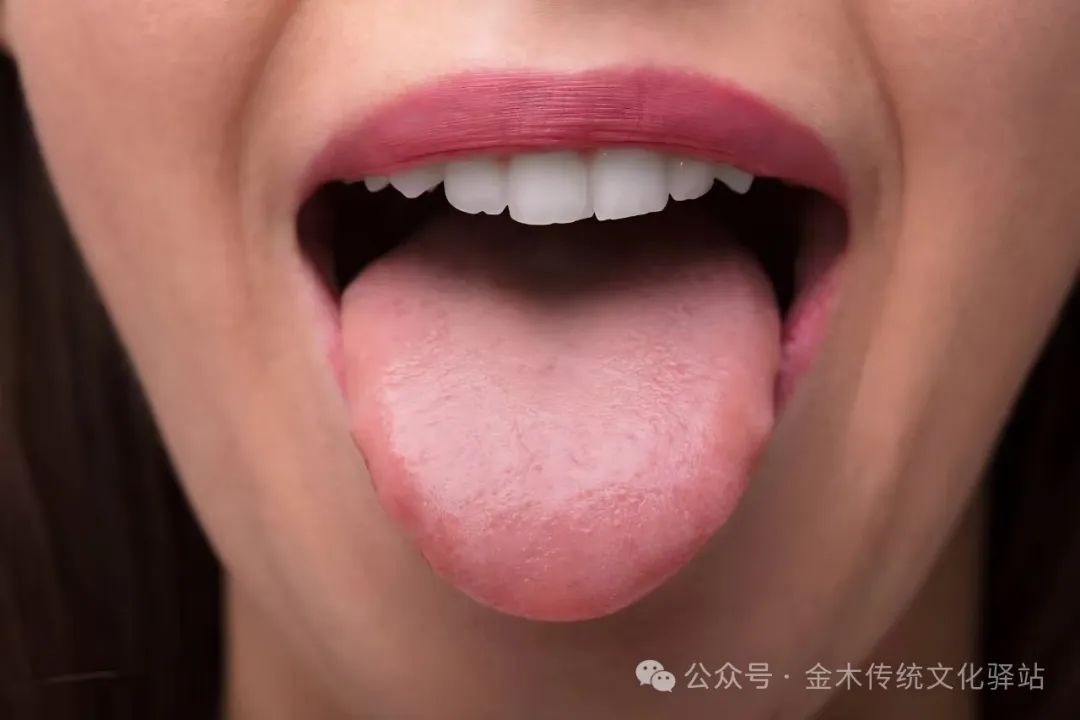
7. Observation of the Tongue in Diagnosis: The “Formula Thinking Theory” states: “Even experienced doctors find it easy to understand the heart, but difficult to clarify the fingers. Tongue diagnosis is like a barometer, accurately reflecting the health status of the body, and is easy to grasp.”What is the method of tongue diagnosis? A tongue without coating indicates an exterior condition, bright red indicates heat, and pale white indicates cold.Key points for tongue quality diagnosis depend on color and shape. The tip of the tongue reflects heart and lung conditions. The tongue is the sprout of the heart and is also the exterior of the spleen. The heart meridian connects to the tongue base. The spleen meridian connects to the tongue base, dispersing under the tongue. The lung meridian connects to the throat and tongue root. The kidney meridian runs through the throat, connecting to the tongue base. The liver meridian runs behind the throat, connecting to the tongue base. Changes in the organs, meridians, qi, blood, and fluids can be reflected on the tongue.What does a normal tongue look like? (1) A normal tongue is moist, light red, but due to different endowments, tongue quality varies.“Tongue Diagnosis Guide” states: “A tongue without disease varies in shape and color; some are clean, some have a slight coating, some are bright red, some are pale white, some are tight and pointed, while others are soft and round, and some have teeth marks—this is due to different endowments when there is no disease, hence the tongue quality also varies.”Additionally, a normal tongue may show teeth marks, cracks, and peeling coating; in summary, a normal tongue is flexible, soft, light red, and has thin white coating.1. A thin and small tongue indicates deficiency syndrome;2. A bright red tongue with a smooth white coating indicates heat in the nutrient level;3. A pale and tender tongue with a white and moist coating indicates deficiency-cold syndrome;4. A pale, plump tongue with a yellow and moist coating often indicates yang deficiency with water retention;5. A tongue that is too pale or white indicates anemia and water retention, indicating deficiency-cold syndrome;6. A bright red tongue indicates excess heat, often swollen, indicating excess heat in the heart and spleen;7. A dark red tongue indicates severe heat. A purple tongue indicates blood stasis;8. A red tongue indicates heat, often dry with little or no coating, indicating severe heat injuring fluids;9. A red tongue is often seen in internal heat syndrome and yin deficiency syndrome;10. A dark red tongue is often seen in the extreme stage of external heat disease and yin deficiency with excess fire;11. A dark red tongue often indicates external heat disease, heat entering the nutrient blood;12. A dark red tongue with little coating and moistness is often seen in blood stasis syndrome;13. A light red tongue with thick yellow coating is often seen in external wind-cold transforming into heat, or external damp-heat evil;14. A red tongue with yellow and greasy coating indicates liver and gallbladder damp-heat, which may present with rib and abdominal distension and pain;15. A plump tongue indicates water retention or dampness, possibly indicating hypothyroidism;16. A trembling tongue is a precursor to stroke. Tongue diagnosis should be performed in the morning after waking, before brushing, for the most accurate observation;17. A tongue without coating, like an oil-free kidney bean, indicates loss of fluids, which is untreatable.Thorny protrusions on the tongue are sharp red or yellow-black particles that feel prickly, indicating excessive heat in the qi level, or excessive yang heat in the organs. The presence of thorny protrusions on the tongue indicates excessive heat in the organs or blood.“Observation Diagnosis” states: “Thorny protrusions on the tongue indicate excessive heat accumulation.” “TCM Tongue Diagnosis” states: “Evil heat entering the nutrient level can appear on the tongue, regardless of whether it is in the middle or lower jiao.”(2) Key points for diagnosing thorny protrusions on the tongue:1. Thorny protrusions on the tip of the tongue often indicate excessive heart fire;2. Thorny protrusions on the sides of the tongue often indicate excessive liver and gallbladder heat;3. Thorny protrusions in the middle of the tongue often indicate extreme heat in the stomach and intestines;4. A red tongue with thorny protrusions indicates heat in the yangming qi level;5. A dark red tongue with thorny protrusions indicates heat deeply entering the nutrient blood;6. The more thorny protrusions on the tongue, the more severe the heat, indicating excessive heat in the qi level and organs;(3) Key points for diagnosing critical conditions based on tongue appearance:1. A tongue resembling a mirror surface indicates a critical condition;2. A tongue resembling a dry fire color indicates a critical condition;3. A tongue resembling a peeled kidney bean indicates a critical condition;4. A tongue that is shiny and without coating indicates a critical condition with no treatment;5. A tongue that is rough and prickly, dry and cracked indicates a critical condition;6. A tongue that is tightly bound and unable to move indicates a critical condition with no fluids;7. A tongue that is stiff and unable to move, with slurred speech indicates a critical condition.
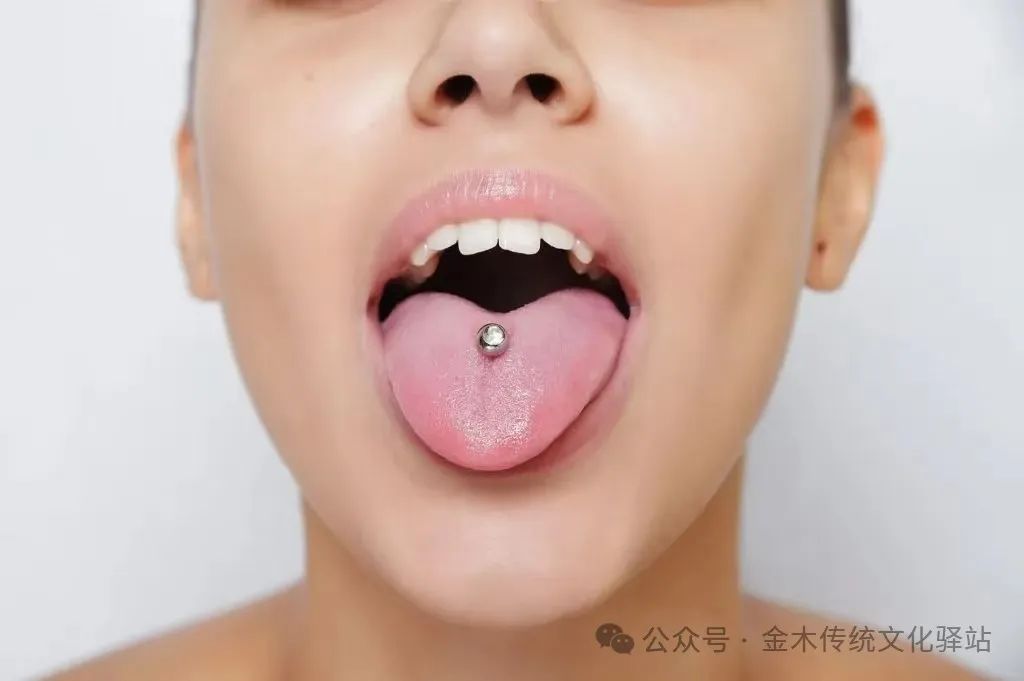
8. Observation of Tongue Coating in Diagnosis: Key points for observing tongue coating depend on the color and presence of the coating.(1) How is tongue coating produced?Tongue coating is produced by the stomach qi and stomach yin rising to the tongue surface. The “Essence of Cold Damage” states: “Tongue coating is the vital energy of the stomach, like the fine grass on the ground.” Tongue coating is a layer of coating on the tongue surface.(2) What does normal tongue coating look like?Normal tongue coating is light white, not thick, with a balance of dryness and moisture, neither slippery nor dry, but in summer, the coating may be thicker and slightly yellow, but not excessive or stagnant, which is also considered normal coating.(3) What is the method of tongue diagnosis?A tongue without coating indicates an exterior condition, bright red indicates heat, and pale white indicates cold. The thickness of the tongue coating indicates the depth of the disease; the moisture of the tongue coating indicates the abundance or deficiency of fluids; the greasy coating indicates damp turbidity; color indicates cold, heat, dampness, and dryness of the evil.(4) How is thick coating produced?Thick coating is produced by stomach qi combined with damp turbidity evil qi, steaming and rising. All organs derive qi from the stomach, hence it can be used to diagnose the cold and heat of the organs, the nature of the evil, and the depth of the disease. Since stomach qi is generated by the heart and spleen, healthy individuals often have thin coating, which is the vital energy of the stomach, like fine grass on the ground.(5) Rootless coating:Any tongue coating that is loose and not firmly attached to the tongue surface, easily scraped off, unlike the naturally occurring coating, is called rootless coating. This is often seen after prolonged illness, indicating deficiency of stomach qi. It is often a sign of stomach qi decline, commonly seen in chronic deficiency and cold conditions.1. Thin coating indicates a mild disease, with the evil being relatively shallow, often indicating an external pathogen;2. Thick coating indicates a severe disease, with the evil entering the interior. Thick coating indicates poor appetite, food accumulation, or phlegm dampness. Yellow coating indicates damp-heat.3. No coating (also known as peeled coating resembling flower peeling) generally indicates significant injury to both stomach qi and yin, with stomach yin being consumed and qi and blood being deficient; no coating, like an oil-free kidney bean, indicates loss of fluids, which is untreatable. Little or no coating indicates yin deficiency: a tongue surface that is smooth like a mirror is called chicken heart tongue, indicating severe yin injury.4. White coating indicates exterior syndrome and cold syndrome; if there is white coating, it indicates half exterior and half interior. Moist coating indicates cold. Dry coating indicates fire.5. Yellow coating indicates interior heat syndrome. Damp-heat steaming indicates yellow coating; yellow coating indicates heat syndrome in the interior. Yellow coating indicates interior heat, while black coating indicates disease entering the lesser yin, often indicating a terminal condition.6. Moist coating indicates wind-cold exterior syndrome, early damp syndrome, or blood stasis syndrome; moist coating indicates cold. Dry coating indicates fire.7. Dry coating indicates high fever, excessive sweating, vomiting, diarrhea, damp obstruction, or excessive use of warming and drying medicines;8. Moist coating with a tight pulse or a tight and sinking pulse indicates cold stagnation in the liver meridian, which may present with lower abdominal pain radiating to the testicles;9. Greasy coating: the coating is fine and dense, merging into sheets that are difficult to scrape off, indicating damp turbidity, phlegm, and food accumulation; greasy coating, thick coating indicates excessive dampness.10. Putrid coating: the coating is coarse and large, with a loose base, like tofu dregs, piled on the tongue surface, easily scraped off, indicating excessive heat and turbid evil rising from the stomach, dividing into front, middle, and back sections, with the back indicating heat in the kidneys, bladder, and lower jiao; putrid coating indicates damp-heat;11. Black coating that is dry indicates excessive heat. Black coating that is moist indicates excessive cold. Black coating indicates disease entering the lesser yin, often indicating a terminal condition.

9. Observation of Headache in Diagnosis: Why observe the head and face? The head is the meeting point of all yang, with the governing vessel and the three yang meridians of the hands and feet all converging in the head and face. The yin meridians include the ren vessel and the foot jueyin liver meridian, which also converge in the head. The head is the residence of the spirit, housing the brain marrow, which is the abode of the original spirit. The brain is the sea of marrow, governed by the kidneys, with the kidney essence manifesting in the hair, and the blood vessels nourishing the head and face. Therefore, observing the head and face, neck, and hair is primarily to understand the rise and fall of heart and kidney, as well as qi and blood.All six meridians can cause headaches:Pain in the back of the head belongs to the taiyang meridian (foot taiyang bladder meridian, hand taiyang small intestine meridian);Pain on both sides of the head belongs to the shaoyang meridian (foot shaoyang gallbladder meridian, hand shaoyang sanjiao meridian);Pain in the forehead belongs to the yangming meridian (foot yangming stomach meridian, hand yangming large intestine meridian);Pain at the top of the head belongs to the jueyin meridian (foot jueyin liver meridian, hand jueyin pericardium meridian);Pain throughout the body indicates exterior evil;Head heaviness often indicates brain deficiency with heavy dampness;Constant shaking of the head indicates internal liver wind movement;Constant shaking of the head indicates qi and blood deficiency, leading to insufficient nourishment of the brain;Headaches without intervals, with cold and heat sensations, indicate an external pathogen;Headaches with dizziness, with intermittent pain, indicate internal injury;Dizziness with cold often indicates phlegm-damp obstruction, preventing clear yang from rising;Dizziness with deficiency often indicates kidney deficiency and excessive liver yang;Wind-phlegm headaches often indicate liver and spleen issues.
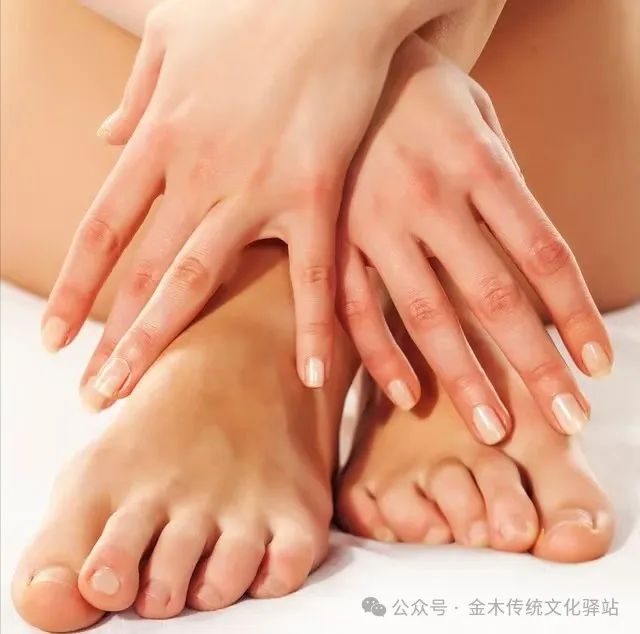
10. Observation of Hands and Feet in Diagnosis: Numbness in the hands and feet, or numbness in one part of the body often indicates qi deficiency;Numbness in the hands and feet extending to the elbows often indicates a precursor to stroke;Twitching of the hands and feet often indicates spleen and stomach qi deficiency, leading to insufficient nourishment of the tendons;Trembling of the hands and feet often indicates blood deficiency, insufficient nourishment of the tendons;Trembling of the hands and feet due to excessive drinking also indicates a precursor to stroke;Inability to walk, weakness without pain indicates atrophy syndrome;Pain in the feet often indicates spleen deficiency;Weakness and fatigue in the limbs indicate inability of spleen essence to distribute;Cold limbs, fatigue, and spiritlessness indicate spleen yang deficiency. Heart disease often presents with inner arm pain; spleen disease often presents with foot pain; lung disease often presents with shoulder and back pain; kidney disease often presents with lower abdominal pain; liver disease often presents with pain under the ribs, radiating to the lower abdomen;

11. Observation of Diet in Diagnosis: Abdominal distension and pain after eating indicate excess;Relief of pain after eating indicates deficiency;Preference for cold food often indicates heat syndrome;Preference for hot food often indicates cold syndrome;Generally, if the disease worsens after eating, it often indicates excess syndrome;Generally, if the disease improves slightly after eating, it often indicates deficiency syndrome;Feeling bloated after eating indicates qi stagnation and food obstruction;Good appetite but feeling bloated indicates a strong stomach with a weak spleen;Inability to eat when hungry, with a rumbling stomach, indicates phlegm-fire obstruction;Eating a lot but losing weight indicates internal fire in the stomach, leading to consumption.

12. Observation of Urination in Diagnosis: Clear and white urine indicates cold;Yellow and red urine indicates heat;Deep yellow urine indicates internal damp-heat;Bright red urine indicates blood heat;Short and yellow urine indicates excess syndrome;Yellow-brown urine resembling pus indicates damp-heat jaundice;Yellow-red and turbid urine, with painful urination, indicates damp-heat;Foul and turbid urine indicates damp-heat affecting the bladder;Foul-smelling and turbid urine indicates bladder damp-heat;Frequent urination with clear urine often indicates deficiency-cold;Clear urine with frequent involuntary urination indicates qi deficiency;Dribbling urine with abdominal pain and fever indicates excess heat;Little or no urination with cold in the lower back indicates deficiency syndrome;Dribbling urine with pain in the urethra often indicates gonorrhea;Frequent urination indicates kidney deficiency;Painful urination with blood indicates blood lin;Frequent and urgent painful urination, red and swollen often indicates bladder damp-heat or kidney deficiency;Frequent urination with thirst and weight loss often indicates diabetes;Involuntary urination indicates kidney qi instability. In children, bedwetting often indicates underdevelopment;In boys, a scrotum that is neither tight nor loose indicates abundant kidney qi;In boys, a loose scrotum often indicates physical weakness or fever.

13. Observation of Bowel Movements in Diagnosis: Loose, thin, and clear stools indicate spleen yang deficiency;Weak and loose stools indicate spleen qi deficiency;Thick, sticky, and foul-smelling stools indicate heat;Black stools indicate blood stasis;Purple stools indicate damp-heat;Foul-smelling and rotten stools often indicate internal heat accumulation;Stools with pus and blood indicate dysentery, often indicating damp-heat in the large intestine;Foul-smelling and thin stools indicate internal heat in the intestines, leading to poor digestion;Loose stools with little odor indicate spleen and stomach deficiency;Stools that are thin and foul-smelling indicate spleen and stomach deficiency;Stools that are hard at first and then loose often indicate spleen and stomach deficiency;Stools that pass naturally without pain indicate deficiency;Stools that are loose in the early morning (five morning diarrhea) often indicate spleen and kidney yang deficiency;Diarrhea with undigested food indicates cold diarrhea;Diarrhea with urgency and burning pain indicates heat diarrhea.Constipation, with blood deficiency pulse, indicates blood depletion and dry intestines;Constipation with abdominal fullness and pain often indicates excess syndrome;Constipation with heat pulse indicates yang accumulation;Constipation with cold pulse indicates yin accumulation;Constipation is common in the elderly, chronic illness, pregnant women, and those with significant fluid loss, blood deficiency, or qi and blood deficiency.

Disseminatingknowledge of TCM health preservation, promoting traditional Chinese culture,sharing health concepts, and conveying care, passing health knowledge and traditional culture to more friends…
People are great because of their dreams; we are different because of our love.
Liu Ling Ning: 182 7127 1941 or (WeChat ID)
Yang Shun Song: 138 7171 7447 or (WeChat ID)


